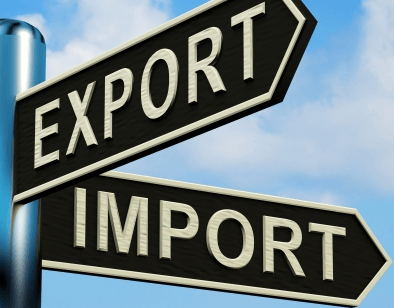African Ministers of Trade meet in Niger to finalize negotiations on CFTA
 Africa is a major player in global trade but the continent’s performance is ironically abysmal. Africa’s share of global trade is low, and intercontinental trade is lowest compared to trade among other countries on other continents.
Africa is a major player in global trade but the continent’s performance is ironically abysmal. Africa’s share of global trade is low, and intercontinental trade is lowest compared to trade among other countries on other continents.
Of the approximately $30 trillion global trade value, Africa’s share is only a meagre 3 per cent, while intra-African trade averages 16 per cent, compared to 70 per cent for Europe, 50 per cent for Asia or 21 per cent for Latin America.
To address this, the 18th Ordinary Session of the Assembly of Heads of States and Government of the African Union held in Addis Ababa, Ethiopia in January 2012 adopted a decision to establish a Continental Free Trade Area (CFTA) by an indicative date of 2017. The efforts towards achieving this have been shaky.
The aim of the CFTA is to create a single continental market for goods and services, with free movement of business persons and investments, and thus, pave the way for accelerating the establishment of the Continental Customs Union and the African customs union. Once in place, the free trade area is expected to cover more than a billion people with a continental GDP of over $3 trillion.
It is held that successful implementation of the CFTA will also accelerate the dynamism of intra-African trade, including the declared objective of increasing trade by 50 per cent among African countries, by 2022.
It is also meant to expand intra-African trade through better harmonization and coordination of trade liberalization and facilitation regimes and instruments across Africa in general, as well as resolving the challenges of multiple and overlapping memberships to expedite the regional and continental integration processes.
Then in June 2015, AU leaders launched the CFTA negotiations in Johannesburg.
The meeting of Ministers in Niamey, Niger, set for December 1 and 2, 2017 is therefore crucial in moving forward the processes of establishing the CFTA .
“The objective of these meetings is to conclude the outstanding issues of the Modalities for Tariff Liberalization that were adopted at the 3rd Meeting of the AU Ministers of Trade in June 2017; and to consider the draft Texts of the CFTA Agreement, its Protocols and its Annexes and Appendices,” David Luke, the Coordinator of the African Trade Policy Centre at the Economic Commission for Africa (ECA) has said in a press release from the ECA.
Luke believes that the CFTA will come into effect by the end of 2017.
“Given the momentum behind the negotiations thus far, we are confident that there will be an agreement by the end of the year,” he said.
In Niamey, the ministers are expected to consider the Report of the 4th meeting of the Senior Trade Officials, which took place on 27 – 29 November in Niamey; and approve the Text of the Agreement establishing the CFTA, Protocols on Trade in Goods and Services and any other Annexes deemed as early harvests.
By Emmanuel K. Dogbevi
Copyright ©2017 by Creative Imaginations Publicity
All rights reserved. This news item or any portion thereof may not be reproduced or used in any manner whatsoever without the express written permission of the publisher except for the use of brief quotations in reviews.
